The FSP Hydro PTM Pro 1200W PSU Review: Improving on the Tried and True
by E. Fylladitakis on April 20, 2022 8:30 AM EST- Posted in
- Cases/Cooling/PSUs
- PSUs
- 1200W
- FSP
- 80Plus Platinum
- Modular

As most technology enthusiasts already know, the number of the actual power supply unit (PSU) manufacturers is far smaller than the number of the companies that ship PSUs. Most companies use their own engineering teams to improve/modify an existing platform originally developed by the Original Design Manufacturer (ODM). The modifications that such companies perform on the original platform can sometimes be significant, but the changes are more often limited to aesthetic adjustments, essentially copying the original unit in everything but the form (or even just color).
Nowadays, most ODMs have their own retail divisions as well, with the most prominent examples being Seasonic and FSP Group. We frequently review both retail units made by Seasonic and units based on Seasonic’s platforms, but we rarely review retail units made by FSP Group as their releases are very few and far apart. The last time we reviewed one of their premium platforms was nearly eight years ago, in the form of the Aurum PT 1200W PSU.
Today we are taking a look at FSP’s current top-tier platform as implemented in the Hydro PTM Pro 1200W PSU. At first sight, the new platform does not look to be much different than the eight-year old Aurum PT, as they both share the same power output and an 80Plus Platinum efficiency certification. But looks can be deceiving, and as we'll see, the Hydro PTM Pro brings a significant number of upgrades that we will examine in this review.
| Power specifications ( Rated @ 50 °C ) | |||||
| +3.3V | +5V | +12V | +5Vsb | -12V | |
| Max Output | 20A | 20A | 100A | 3A | 0.3A |
| 120W | 1200W | 15W | 3.6W | ||
| Total | 1200W | ||||
| AC Input | 100 - 240 VAC, 50 - 60 Hz | ||||
Packaging and Bundle
FSP supplies the Hydro PTM Pro 1200W PSU in a very large and sturdy cardboard box that hints at the dimensions of the power supply. It features a very striking, colorful aesthetic design, with numerous icons at the front of the box and plentiful information printed on its sides and back. Inside the box, the PSU itself is sandwiched between two thick pieces of protective foam.
Inside the box we found a very basic bundle, especially considering this is a flagship-level PSU. The company supplies only a simple AC power cable, four mounting screws, and a basic manual. There are also two sets of side stickers, one green, and one red. The blue set is already glued to the unit. These stickers are permanent and cannot be removed without damaging them.
The FSP Hydro PTM Pro 1200W PSU is a fully modular design, allowing for the removal of every DC power cable, including the 24-pin ATX connector. All of the cables are black, ribbon-like, with black connectors. An odd observation is that there are three EPS connectors – or at least a cable with two connectors and another cable with one connector on it. The two cable bundles are held by reusable cable straps.
| FSP Hydro PTM Pro | ||
| Connector type | Hardwired | Modular |
| ATX 24 Pin | - | 1 |
| EPS 4+4 Pin | - | 1 |
| EPS 8 Pin | - | 2 |
| PCI-E 6+2 Pin | - | 8 |
| PCI-E 8 Pin | - | - |
| SATA | - | 14 |
| Molex | - | 5 |
| Floppy | - | 1 |
The FSP Hydro PTM Pro 1200W PSU
External Appearance
What has the Hydro PTM Pro 1200W PSU visually standing out next to most modern PSUs is its sheer size. The chassis of the unit is 190 mm long, significantly longer than typical ATX units, which can cause compatibility problems with certain ATX case designs.
FSP also sprayed the chassis with textured paint, which is aesthetically appealing and practically immune to fingerprints. Instead of a separate fan finger cover, the designer machined it onto the chassis itself for a better aesthetic result.
The sticker with the unit’s electrical certifications and specifications covers about half the top side of the PSU. Decorative blue-themed stickers are pre-applied on the sides of the unit, which can be replaced with the red or green stickers that FSP includes in the package. The downside here is that the stickers will be destroyed once removed, making any choice technically permanent.
A typical on/off switch can be seen at the rear side of the unit, beside the power connector. Another small switch right next to it controls the “ECO Mode” of the cooling fan. When activated, the cooling fan will shut off while the load is low. The front side of the unit is home to the numerous connectors for the modular cables. A very subtle legend is printed right next to each connector, sprayed directly onto the chassis.
Internal Design
FSP entrusted the cooling of their PSU to Protechnic Electric, whose MGA13512XF-A25 fan can be found underneath the finger cover of the PSU. The 135 mm fan has a fluid-dynamic bearing (FDB) engine and a very high maximum rotational speed of 2100 RPM.
As we mentioned above, FSP is both the designer and the manufacturer of the Hydro PTM Pro. The design appears to be a little outdated, with two main transformers, but nonetheless it's based on widely used and proven topologies. It seems that the company is very confident about the reliability of their design, as the heatsinks are dreadfully small for a unit with that high a power output.
The layout is very clean and the circuitry components are grouped nicely together. A significant amount of hot glue is keeping all connectors and parts that might be somehow freed fastened in place. The filtering stage is pretty basic and begins on the rear of the AC switch, with four Y capacitors, three X capacitors, and two filtering inductors. The filtering stage leads to two large rectifying bridges, which are placed on their own heatsink.
The passive components of the APFC circuitry are two large 450V/560μF APFC capacitors made by Rubycon, followed by a large filtering coil. The active APFC components are on a long heatsink across the edge of the PCB. Four transistors form a full-bridge inversion topology at the primary side of the unit. The outputs of both transformers are connected to eight power MOSFETs that generate a single 12V rail.
The 3.3V and 5V lines are being generated via the DC-to-DC conversion circuits found on a large vertical PCB that covers most of the unit’s left side. All of the secondary capacitors, electrolytic and polymer alike, are made by Rubycon and Nippon Chemi-Con.


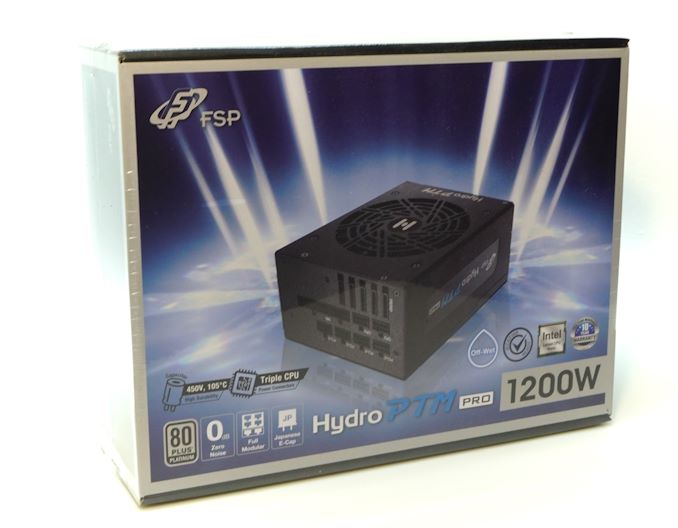

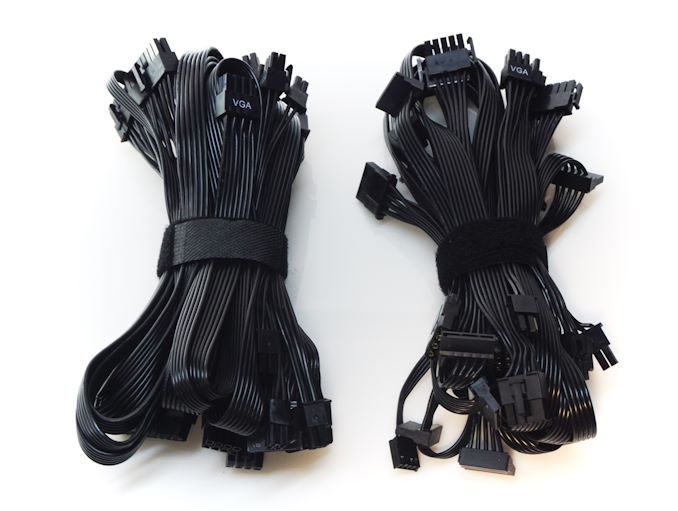
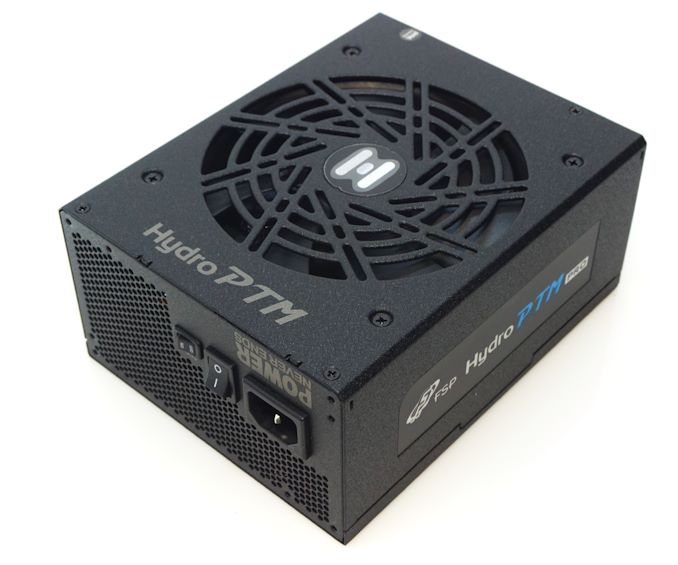

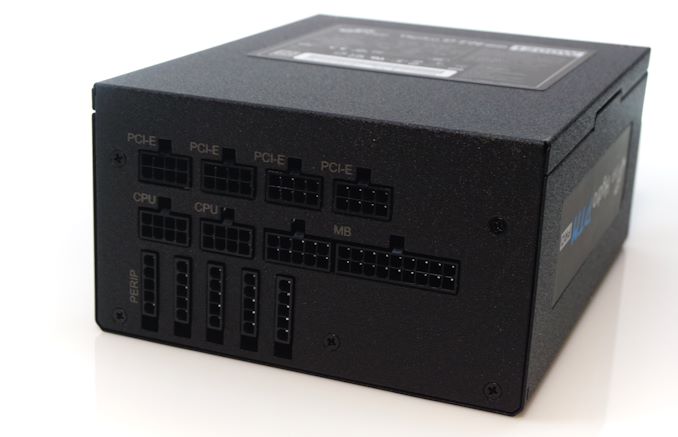
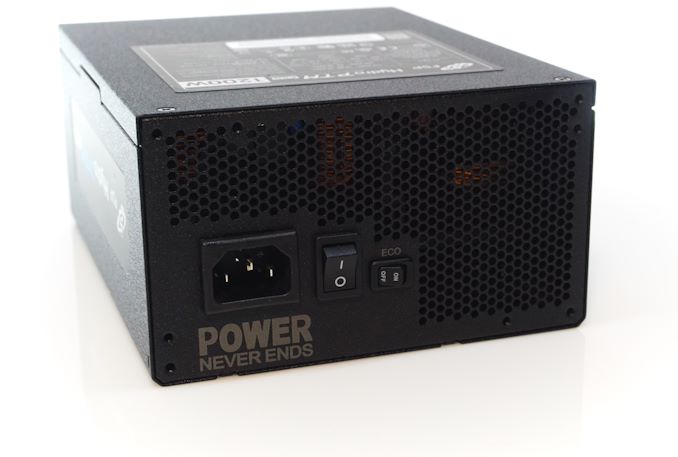
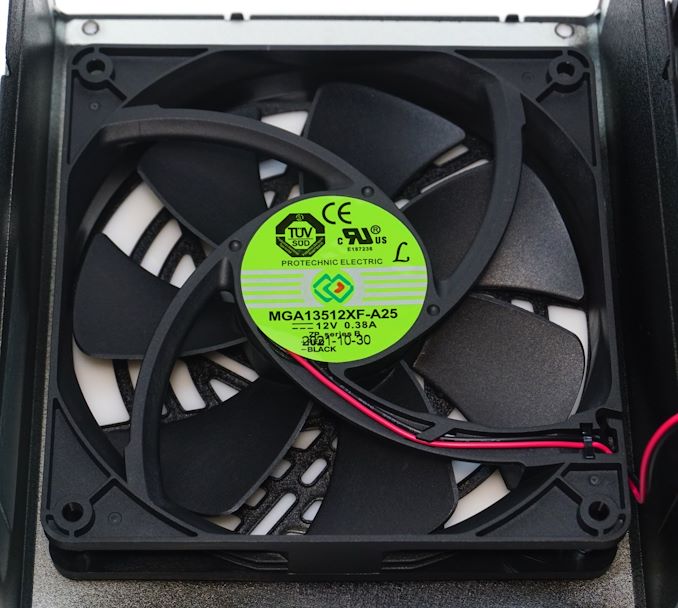
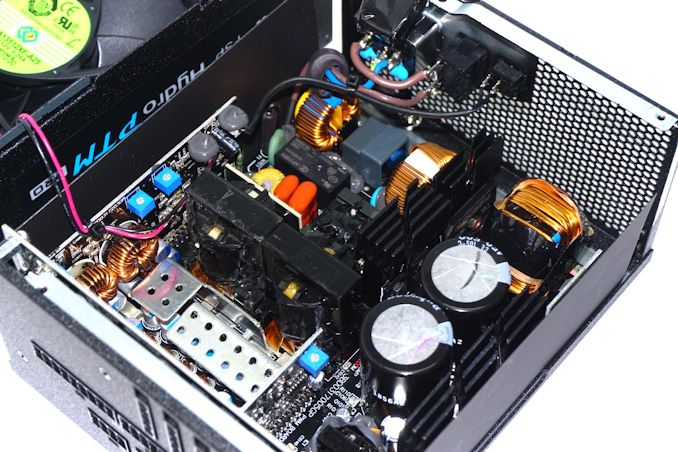


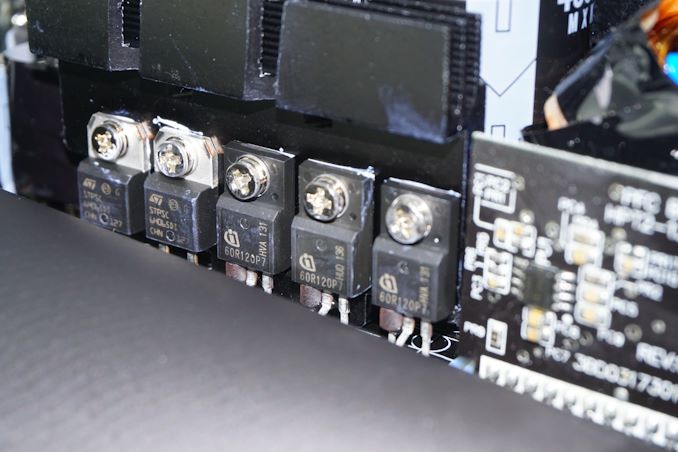
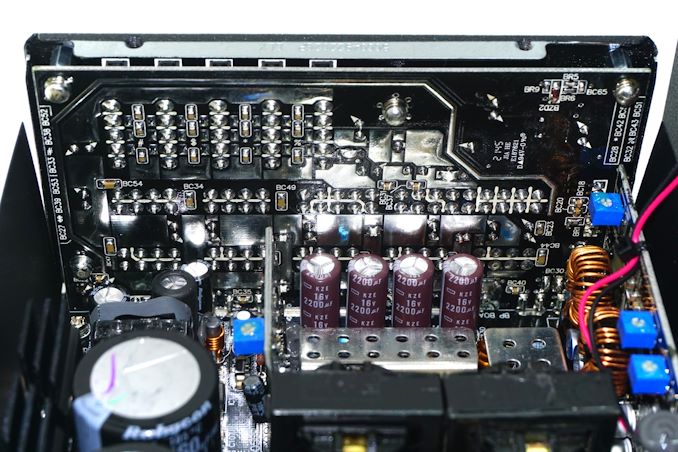
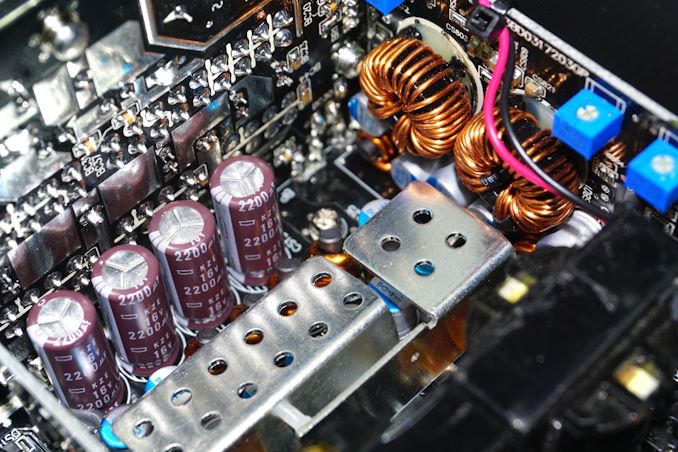








20 Comments
View All Comments
ballsystemlord - Thursday, April 21, 2022 - link
I'm assuming desktop HDDs "ramp-down" when not in use. So they'll then need to ramp-up when the system is running and the CPU+GPU is more loaded down.I can't really say if the various GPUs go to full power when first powered on, or if they go into an idle state. It's safer to assume a higher power draw than underestimate things IMHO.
dqniel - Friday, April 22, 2022 - link
Who uses 5 METERS of RGB strip in their PC? Even if you went with that crazy amount of RGB, a normal kit uses about 5 watts per meter. That's only ~25W, not 220W.Samus - Wednesday, April 20, 2022 - link
Someone mentioned this last time an FSP Hydro PSU was reviewed, and it still sticks out in my mind that naming an electronic power supply with a liquid acronym sends shivers down my spine :)meacupla - Wednesday, April 20, 2022 - link
hydro not only applies to water based fluids, but also oil based fluids. Like hydraulic systems typically use mineral oils with additives that reduce corrosion, and wear.Sivar - Wednesday, April 20, 2022 - link
To me, it implies "water cooled", like the EVGA FTW HYDRO series of graphics cards.This leads me to wonder: Why would a power supply need liquid (whether oil or water) cooling?
Slash3 - Wednesday, April 20, 2022 - link
FSP has actually produced a few water cooled versions (including a similar 1200W) over the years under the Hydro nameplate.https://www.anandtech.com/show/12411/fsp-liquid-co...
There have been a few others that have done so (Koolance, DeepCool, etc), but none of them were particularly popular for obvious reasons.
Oxford Guy - Thursday, April 21, 2022 - link
Is this all these companies can do now — use undersized heat sinks and blast the fan to compensate?The noise level is unacceptable. It’s bait and switch. Advertise a high wattage but make the product so loud for anything approaching that capacity as to make it worthless. This is just like the UPS that claims sine wave output but which is incapable of actual sine waves above 25% output.
Scams upon scams upon scams. It’s extremely tiresome.
meacupla - Thursday, April 21, 2022 - link
If you stick in an oversized heatsink, what you end up doing is killing all the airflow. Making heat pockets where the hot air doesn't get flushed out is worse, despite the extra cost from a bigger heatsink.flyingpants265 - Thursday, April 21, 2022 - link
I think you missed the point..m16 - Wednesday, May 18, 2022 - link
This is a really tempting PSU, provided its long term reliability is good.During this pandemic it has been hard to get higher power PSUs at a decent price, and while this is on the higher end of pricing, the specs sorta justify it.
I would get it in a heart beat if I can't get anything else as it future-proofs GPUs.